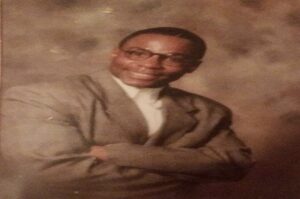Ringside Report Looks Back at Olympian and Professional Boxer Davey Lee Armstrong (1956 – 2021)
 By Donald “Braveheart” Stewart
By Donald “Braveheart” Stewart
1956 June
This was the month and year of a legal declaration that state bus segregation was unconstitutional, Hound Dog appeared on TV and scandalized with Elvis’s hips, the snooze alarm clock was invented, “under God” was added to the oath of allegiance, Arthur Miller appeared before McCarthy and the House of Unamerican Activities Committee and then marries Marilyn Monroe, and future writing sensation, Hunter S. Thompson was arrested for armed robbery.
And Davey Armstrong, often referenced as Davey Lee Armstrong, 24-3, 14 KOs, was born.
Armstrong was a man who was to go on and represent the United States at the Olympics, twice, win a gold medal at the 1975 Pan American Games at featherweight and though he may not have been the most notable event in that month, nor in America, on the 9th of June, in Washington he entered the world.
Armstrong competed in the 1972 Munich Games as a light flyweight and then representing the U.S. in Montreal as a featherweight in 1976. He was well on his way to a third Olympiad when the U.S. pulled out of the 1980 games in Moscow in protest of the Soviet invasion of Afghanistan.
Training alongside Leo Randolph, Rocky Lockridge, Johnny Bumphus, and Sugar Ray Seales as an amateur at the Tacoma Boys Club, by the legendary coach, Joe Clough, perhaps Armstrong’s fate was sealed as a future amateur star, as he began boxing at the age of 10 in that gym. Though, unlike his training partners he was not to medal at his Olympics or become world champion he did manage to get to not one but two Olympic Games – Munich in 1972 and Montreal in 1976.
In 1972, he was just 16 years of age. Despite being the AAU champion for that year he was unable to get past the second round, being beaten by the eventual bronze medalist, Enrique Rodriguez of Spain. To enter the Games some fancy pen work was done on his birth certificate to get him there – he turned 16 just two months before the event!
After that experience he returned to the US and set about his boxing with gusto, making the 1973 AAU finals, winning it in in 1975 and then that Pan American gold before retaining the 1976 AAU championship and making the Olympic team for a second time.
But before the Games, Armstrong was to be badly hurt in an automobile accident. In March of 1974, he rolled over on a snowy Californian Highway whilst a passenger in a van. He ended up with third degree burns on both of his feet.
The second Olympics began for him in the round of 32 when he faced the Soviet Unions’ Anatoly Volkov. Armstrong won 5-0. He followed that up with another whitewash against Hungarian Tibor Badari.
Then in the quarter finals he met Cuba’s Angel Herrera. Herrera was on his way to winning his first of two Olympic Gold Medals…
It was no disgrace, but he spent hours crying afterwards, and departed the Olympics without waiting to see how his teammates got on. The thought, never mind the sight, of the Cuban winning gold was apparently too much for him to bear. What added to his agony was the widely held belief that he had bene robbed in the split decision loss – two of the five judges had given him the win.
Armstrong, now at the still tender age of 24, returned home and set about his 5th national AAU championship which came in 1979 but at a higher weight than he had been boxing at before.
On the 28th of March 1980, Armstrong became a professional boxer under the stewardship of yet another legendary trainer – Emmanuel Steward. Having been training alongside legendary amateur fighters at Tacoma, he moved to Detroit and boxed out of Steward’s world famous Kronk Gym.
He fought Gil Hernandez at Tacoma and with both fighters debuting at the same time, his points win was a welcome beginning.
Things progressed as they would for any fighter, until he went in with the unbeaten Greg Coverson on the 10th of October 1982, in Detroit. Armstrong lost on points. Afterwards Steward pushed him to retire as his skills as an amateur had stalled and not transferred to the professional game. Quoted in many sources, Steward said, “Davey had razor-sharp skills in 1976. He was ready. He spent his best years chasing a Gold Medal.”
1982, was not a year of razor-sharp skills for Armstrong. But he was a boxer who refused to give up. But not for long. He had another three fights including a win on points against Nick Furlano in Toronto on the 9th of June 1983 for the NABF lightweight title – his only professional belt.
The final fight came in July of that self-same year, on the 22nd in San Jose, where he lost on points to Steve Romero.
After his boxing journey came to an end his retirement allowed him contentment and peace as a bookkeeper for the City of Seattle.
In February of last year, 2021, Armstrong lost his battle with dementia and slipped away. His legacy, though not one filled with battles in Madison Square Gardens or Las Vegas unification fights, is still one worth remembering – of a fresh faced 16-year-old at an Olympic Games he deserved to be at, against a legendary Cuban in a quarter final which he lost 3-2 and acquitted himself well within. Rather than the new-fangled snooze alarm clock being the best innovation that came out of June 1956, for me it may well have been one Davey Armstrong.

